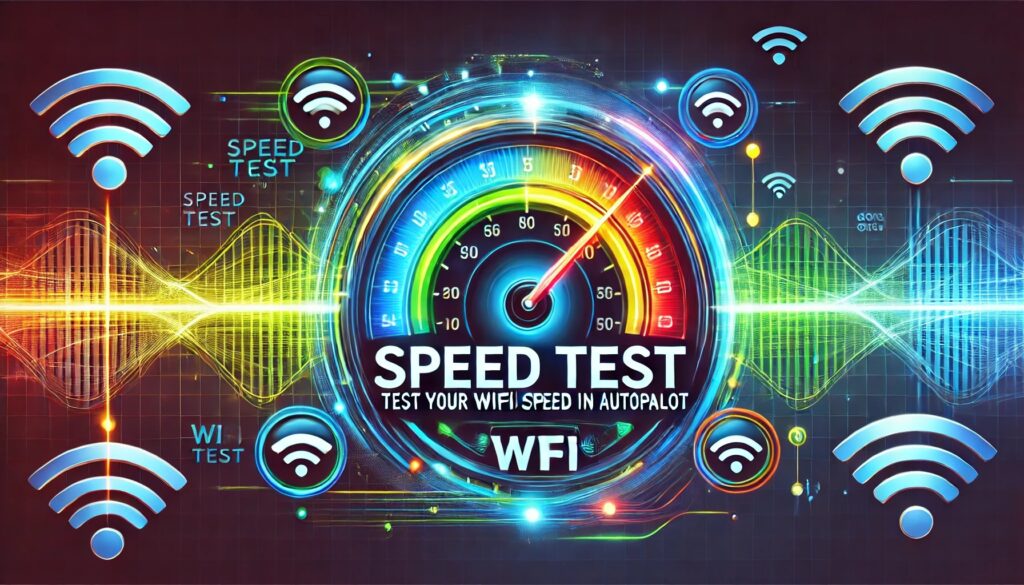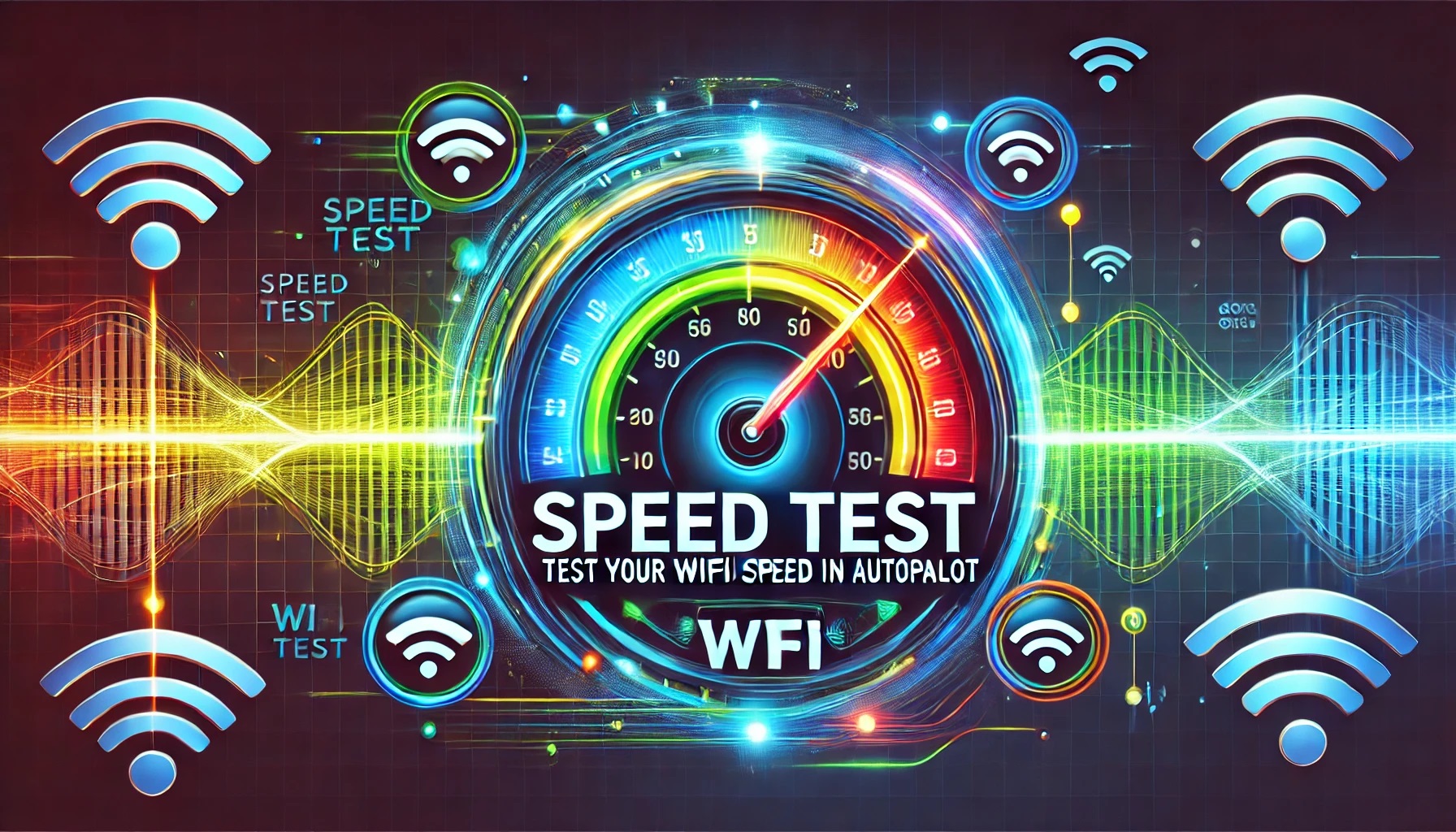
Speed Test For My Wifi: Test Your WiFi Speed on Autopilot
Millions of users face daily frustration with slow internet and buffering screens. A WiFi speed test reveals your connection’s performance and helps you verify the internet speeds match your service plan. Users who test their speeds regularly can spot network issues early and fix them before they become serious problems.
Speed tests measure significant data points like download speed, upload speed, and latency. These automated checks analyze your signal strength, ping time, and jitter to give you a complete view of your network’s health. This piece shows you how to run these tests, interpret your results, and resolve common WiFi speed problems that affect your daily internet use.
Why Run a WiFi Speed Test?
Running a WiFi speed test serves many significant purposes in our digital world. Regular testing enables users to monitor their connection’s performance and helps them spot patterns, fluctuations, and problems that might affect their online experience [1].
Users just need to run speed tests to hold their providers accountable. Internet service providers advertise maximum speeds for their plans, but real speeds rarely match these promises [2]. Regular tests help users verify if they get the service levels they pay for so they can discuss any issues with their provider.
Your online activities just need different internet speeds:
0-5 Mbps: Simple tasks like email and web browsing
20-40 Mbps: 4K video streaming and HD gaming
100+ Mbps: Multiple device usage with gaming and streaming
1+ Gbps: Unlimited capabilities on many devices [3]
Speed tests are vital tools to fix network problems. They help users identify common issues like network congestion, weak WiFi signals, or damaged cables [4]. On top of that, these tests can show if an ISP throttles speeds during peak usage times or when users hit certain data limits [5].
Users can make smart choices about their internet service needs by knowing their actual connection speeds and ensuring their setup supports their daily online activities [6]. This knowledge becomes vital especially when you have multiple devices competing for bandwidth or users participate in demanding activities like video conferencing or online gaming.
How to Perform an Automated WiFi Speed Test
Speed Test For WiFi is your go-to platform for automatic, hassle-free internet and WiFi speed testing. It offers a user-friendly, autopilot solution to check and monitor speeds, so you’re always informed about your connection’s performance without lifting a finger.
To start benefiting from automated, accurate speed testing on Speed Test For WiFi, follow these steps:
View comprehensive speed metrics, including download speed, upload speed, latency, and jitter—all crucial for understanding network performance.
Explore a dedicated section for test results, conveniently organized for easy tracking and review.
Browse site-wide solutions for common WiFi and internet issues, such as connection stability, speed drops, and more.
Enable search across the entire site to find answers to any internet or WiFi concern with in-depth guides and advice.
Testing both wired and wireless connections provides the most complete network insight, and Speed Test For WiFi’s system ensures maximum accuracy for even high-speed internet plans. WiFi speeds may struggle with plans above 200Mbps, but our advanced testing identifies any inconsistencies, so you can get the most from your connection.
Every test on Speed Test For WiFi logs download speed, upload speed, latency, and jitter, capturing essential metrics with timestamps for easy review. This automated process is perfect for tracking patterns and identifying any long-term issues that may need addressing.
With its data-driven results, Speed Test For WiFi also provides evidence-based insights that can assist in conversations with your Internet Service Provider for resolving service issues. Enjoy entertainment features and a comprehensive suite of internet tools while diagnosing and optimizing your connection—all on Speed Test For WiFi!
Understanding Your WiFi Speed Test Results
WiFi speed test results become clear when you understand three basic metrics that show your connection’s quality. A speed test measures download speed, upload speed, and ping (latency). Each metric plays a significant role in different online activities [11].
Download speed, measured in Mbps (megabits per second), shows how fast data moves from the internet to your device. Industry standards recommend these download speeds for common activities:
1-5 Mbps: Basic email and web browsing
15-25 Mbps: HD video streaming
40-100 Mbps: 4K video and online gaming
200+ Mbps: Multiple device usage with 4K streaming [12]
Upload speed measures data movement from your device to the internet. Upload speeds usually run lower than download speeds, but they matter a lot for video conferencing and file sharing. Video calls need at least 1.5 Mbps, though 10-20 Mbps delivers smooth performance [13].
Jitter and packet loss also affect your connection’s quality. Jitter measures latency variations, and values should stay below 30ms [14]. A stable connection needs packet loss under 1% [14]. These factors become especially important during video calls and online gaming.
Test results vary throughout the week. Wednesday through Friday show the fastest speeds, while Sunday speeds lag behind [13]. Users should run multiple tests at different times and spots in their space to get a full picture [13].
Troubleshooting Slow WiFi Speeds
Poor WiFi speeds can be fixed with several troubleshooting steps that restore the best possible connection. Your router’s location matters a lot because signal strength depends on distance – people right next to their router get better speeds than those two floors away [15].
These fixes will help improve your connection right away:
Put the router in a central, high place
Clear the path between your devices and router
Take unused devices off the network
Empty browser cache and update software
Your network slows down when too many devices fight for bandwidth. Studies show that WiFi speeds drop when multiple devices stream videos or play online games at once [16]. Users might need a better internet plan or they can set up Quality of Service (QoS) to give priority to important apps.
Technical Solutions can fix speed problems that won’t go away. Old network drivers hurt your connection quality by a lot [15]. Network drivers need regular updates and changing DNS server settings can help connection speed. Malware can also slow down your device’s performance, so security scans are vital [15].
Speed tests through a VPN can show if your Internet Service Provider (ISP) limits your connection. Better speeds through VPN point to throttling as the cause [17]. You might need to call your ISP or switch providers if this happens.
Conclusion
WiFi speed testing is important for modern internet users who rely on continuous connection. The tests measure important performance indicators such as download speed, upload speed, and latency. These measurements help users learn about their network capabilities. Users can match their connection speeds with their specific needs that range from simple web browsing to high-demand activities like 4K streaming and online gaming.
A combination of smart troubleshooting strategies and automated testing provides a reliable approach to maintain optimal internet performance. Users who understand their speed test results can make better decisions about router placement, network configuration, and service upgrades. This knowledge enables them to fix common issues quickly and communicate effectively with their service providers when problems occur. They can ensure they receive the internet speeds and quality they pay for.
FAQs
What constitutes a good WiFi speed for testing purposes?
A satisfactory internet speed for basic broadband as per the Federal Communications Commission (FCC) is at least 25Mbps for downloads and 3Mbps for uploads. However, for enhanced performance, speeds between 40–100Mbps are recommended.
What are ideal WiFi speeds for home use?
For home usage, a good download speed is around 100Mbps, and a good upload speed is about 10Mbps. This speed allows for streaming movies, participating in Zoom meetings, and online gaming across multiple devices simultaneously. Requirements may vary based on individual usage and the number of devices.
How do I determine my WiFi connection speed?
You can check your WiFi speed using tools like Speedtest by Ookla, which offers a comprehensive analysis including video testing and mobile coverage maps. For a more detailed assessment, downloading the Speedtest app is advised.
Is a 100 Mbps internet connection considered fast?
Yes, 100 Mbps is generally sufficient for most online activities such as web browsing, downloading, streaming, and gaming. It is adequate for households with three to five users or devices, though larger households with simultaneous heavy usage might require higher speeds.
References
[1] – https://www.speednetlte.com/post/the-importance-of-regular-speed-tests-monitoring-and-improving-internet-performance
[2] – https://www.testmyspeed.com/insights/internet-speed-test-results-explained
[3] – https://www.speedtest.net/about/knowledge/how-much-speed-you-need
[4] – https://www.highspeedinternet.com/resources/why-is-my-internet-so-slow
[5] – https://www.allconnect.com/blog/consumers-guide-to-internet-speed
[6] – https://internetequity.uchicago.edu/data-story/is-your-wifi-limiting-your-home-internet-performance/
[7] – https://internetequity.uchicago.edu/wp-content/uploads/2022/08/best-practices-collecting-speed-test-data-AUG2022.pdf
[8] – https://www.youtube.com/watch?v=djoOgBGYoL4
[9] – https://www.ninjaone.com/script-hub/internet-speed-test-powershell/
[10] – https://agu.ca/powershell/introduction/speedtest_powershell/
[11] – https://www.minim.com/blog/how-do-i-interpret-my-wifi-speed-test-results
[12] – https://www.highspeedoptions.com/resources/insights/run-internet-speed-test
[13] – https://www.allconnect.com/blog/difference-between-download-upload-internet-speeds
[14] – https://www.ir.com/guides/what-is-network-jitter
[15] – https://www.ccleaner.com/knowledge/why-is-my-wi-fi-so-slow-and-how-can-i-fix-it
[16] – https://www.testmyspeed.com/insights/internet-slow-reasons-why
[17] – https://www.cnet.com/home/internet/stop-internet-throttling-by-using-a-vpn/

